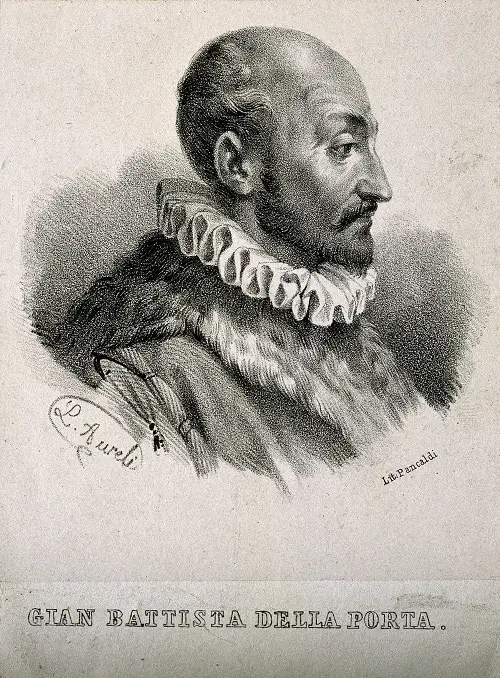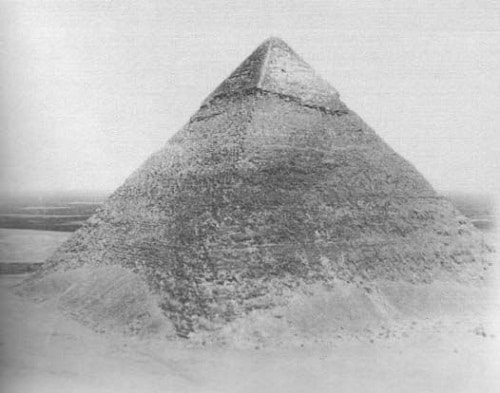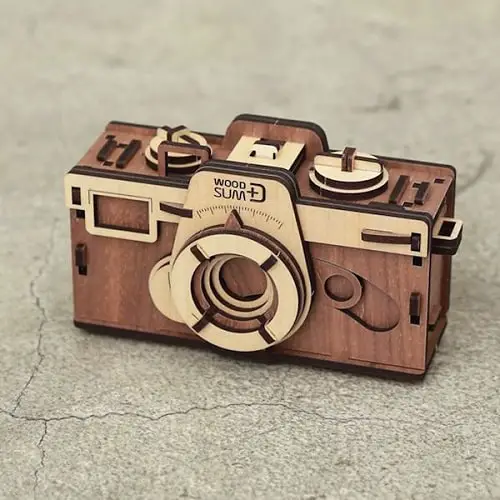When Was The Color Camera Invented
The pinhole camera is also known equally a dark chamber or photographic camera obscura. It's an optical imaging device shaped like a sleeping room or closed box. Essentially, it'south a light-proof box with a small hole in one side and photographic paper or moving-picture show at the other.
Photography, every bit we know it, has been around for less than 200 years. Still, it's evolution at that time has been phenomenal. It's gone from a rough process involving caustic chemicals and unwieldy, bad-mannered cameras to the unproblematic sophistication of creating and sharing images instantly.
Table of Contents
- 1 The invention of the pinhole photographic camera
- two Who invented the pinhole camera?
- ii.1 The first photographs using a pinhole camera
- 2.2 Impressionists and pinhole photography
- 3 The pinhole camera today
- 3.ane Related posts:
The pinhole camera started out every bit a tool of optical scientists and astronomers who were trying to sympathize things similar the wavelength of low-cal and solar eclipses. Past the 16th century, they would besides become popular with artists and painters.
The invention of the pinhole camera
While photography as we know it may be relatively new, the starting time idea of the camera was used to study optics, not to accept and create images. In fact, Ibn Al-Haytham, as well known as Alhazen (945-1040) was an Arab scholar who is credited equally the first person to have studied how humans run into.
Alhazen is credited with inventing the photographic camera obscura as nosotros call up of it. Fifty-fifty though there are references to the camera obscura as early as 400 B.C.E. in Red china and in Aristotle's writings around the year 330 B.C.East., these references are purely philosophical, and at that place's nothing to suggest they actually built a device to test their theory.

Rather, Aristotle talks almost light falling through an opening betwixt a tree's leaves that requite a perfect projection of the sun on the ground. Aristotle noticed that while the opening betwixt the leaves was not perfectly round and irregular, the image on the ground was. 2,400 years ago, Aristotle couldn't explain this phenomenon. Information technology would be 900 years before someone could.
Alhazen put three candles in a row and put a screen with a small hole with the wall and the candles. What he noticed was how the images were formed by means of the small holes. The candle to the right made an epitome to the permit on the wall. From this, he was able to deduce the linearity of low-cal.
In the centuries following Alhazen'south studies, the pinhole technique was used to study sunlight projected from a small aperture by optical scientists. Aside from scientific discipline, the camera obscura was used for astronomy and, once a lens was fitted, information technology was likewise used as a drawing aid. A tool that apprentice painters and artists found about useful.
Nearly notably, Leonardo da Vinci in his notebooks drew over 270 diagrams of camera obscura. Da Vinci died in 1519, and it wouldn't be until 1979 that his notebooks were deciphered and translated.
Papal astronomers, in 1580, used a pinhole and a noon-mark in the Vatican's observatory in Rome because they wanted to show to Pope Gregory XIII that the spring equinox should be on 21 March, not xi March.
Two years after, in 1582, the pope corrected the Julian calendar by ten days, which created the Gregorian agenda (the calendar we utilise today).
Who invented the pinhole camera?
This is hard to pin down. Some take argued information technology'southward Alhazen because of his experiments in the 10th century. Others thought it was a scientist from Naples, Giovanni Battista Della Porta (1538-1615). This was due to his description of the lensless (pinhole) camera obscura in his "Magia Naturalis" (1558). Nevertheless, we now know he in fact didn't invent information technology.

The term camera obscura (literally "darkroom") was coined by Johannes Kepler (1571-1630), during his time the term had come up to mean a tent, box or room with a lens aperture used by artists to describe a landscape. The benefit of camera obscura for artists is that it made the epitome more focused and brighter at a certain distance.
Then in the 1620s, Johannes Kepler invented a portable camera obscura. Presently afterwards that, the photographic camera obscures as drawing aids were found in many sizes and shapes. And and so, in the 19th century, at that place were several camera obscura fabricated at a large scale for places of entertainment and educational activity.
The first photographs using a pinhole photographic camera
In the 1850s, a Scottish scientist Sir David Brewster was ane of the start people who made pinhole photographs. And he was the first person to apply the word pinhole in the context of taking photos. Well, he wrote it every bit "pin-hole" in his 1856 volume "The Stereoscope."
This is different from the style it was used by James Ferguson in a 1764 lecture; or Joseph Petzval's term "natural camera" in 1859; or Deslandres and Dehors term they proposed in the late 1880s, stenopaic camera.
As well read:
Here's a List of xx Inventions in the 1920s [Inventors Included]
The oldest pinhole photographs to still be are those fabricated past the Flinders Petrie (1853-1942). He was an English language archeologist, who took pinhole photos during his excavations in Egypt in the 1880s. Petrie's camera had a simple lens in from of the pinhole.

Impressionists and pinhole photography
The Impressionist painting movement in the 1880s had started to exercise some influence on photography. And over the next 2 decades, unlike tendencies and schools of thought began to develop in photography.
By the 1890s pinhole photography became popular in Europe, Japan, and the United States. In London alone, 4000 pinhole cameras (known as Photomnibuses) were sold in 1892. They seem to have been the late nineteenth century'southward equivalent of the disposable camera. However, none of these cameras accept been preserved in-photographic camera collections anywhere.
Meanwhile, in America, a company invented the disposable pinhole photographic camera. It consisted of a pinhole in tinfoil, a dry drinking glass late, and folding billows. Another American company sold its version which came with chemicals, trays, six dry plates, ruby paper for a safelight, and a print frame.
It wasn't until the middle of the 1960s that there was a revival of sorts with pinhole photography. This was happening virtually notably in Italy, Germany, and the United states of america. And so the '70s saw its popularity increment in Europe, whereas in America it looked similar its popularity was waning.
The pinhole camera today
There is a Worldwide Pinhole Photography Day, the offset one was held on the 29th of April 2001, and has been held every yr in April since then.
Pinhole photography is still a thriving art grade, with many enthusiasts establishing exhibitions of pinhole photography as well as groups on social media to discuss the art form, it's history, and the unlike types of pinhole photography.
1 of the most popular uses, to this day, of the pinhole camera, is for looking at solar eclipses, and other events that involve looking at the lord's day. Manifestly, looking direct at the sun is bad. And with just a few materials, kids can brand their own pinhole camera to stare at the sun without doing whatever serious damage.

At that place are several pinhole cameras available such as the 4×v Rigby camera, the eight×10, and 4×5 Zero Epitome pinhole cameras too as the Pinhole Blender, Omniscope Anamorph, and the Merlin cameras amongst many other reputable brands.
Source: https://nevadainventors.org/pinhole-camera/
Posted by: flynncrue1941.blogspot.com


0 Response to "When Was The Color Camera Invented"
Post a Comment